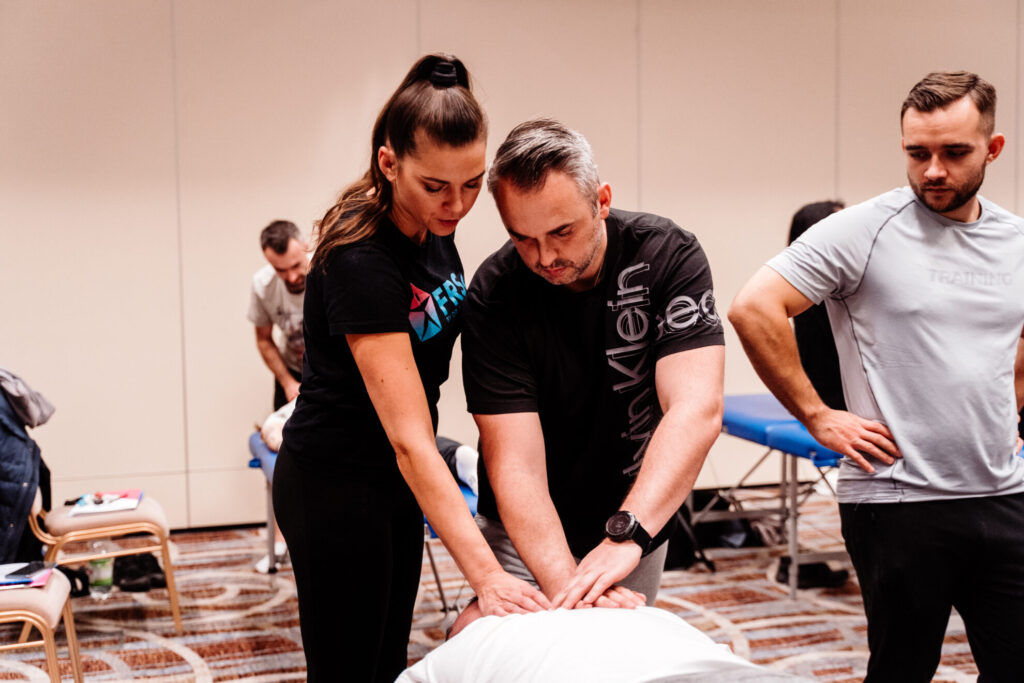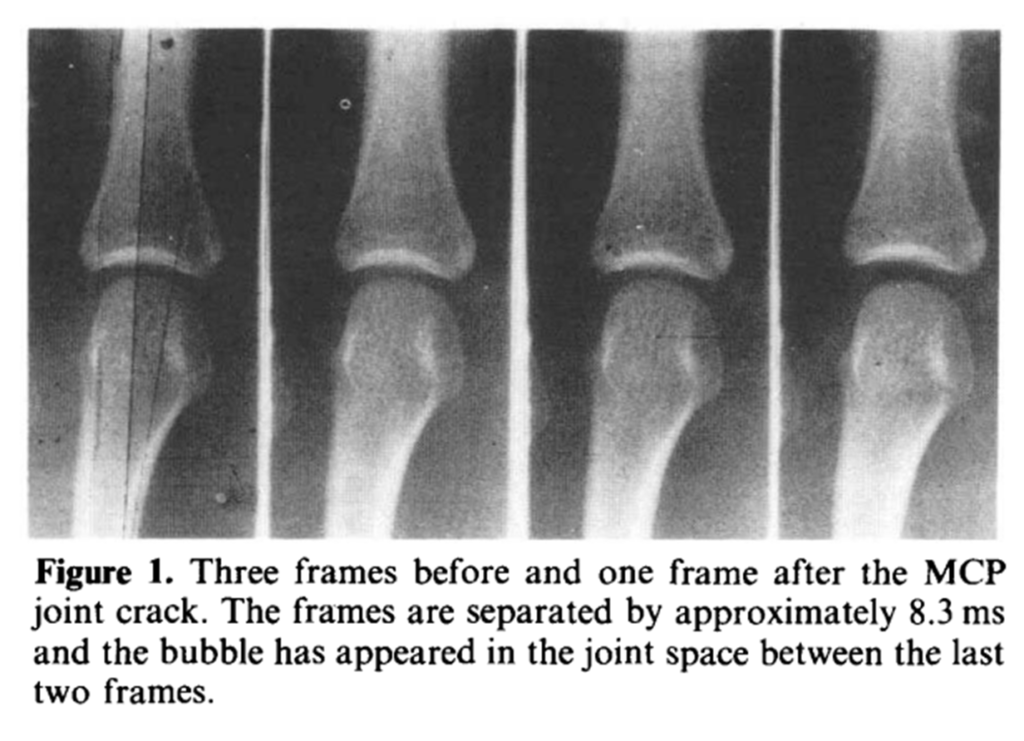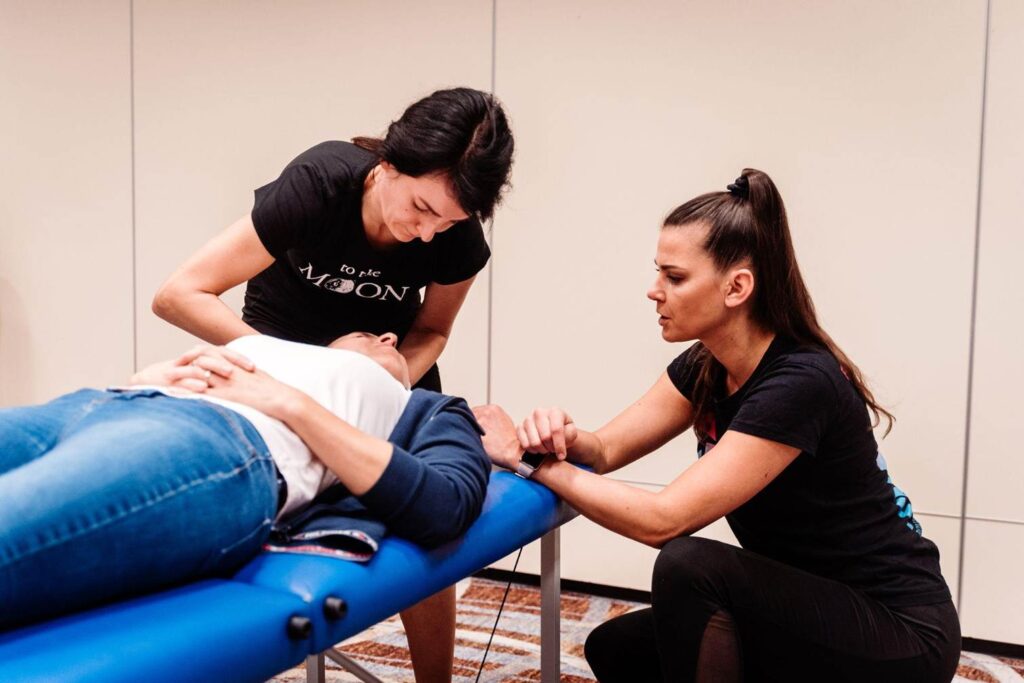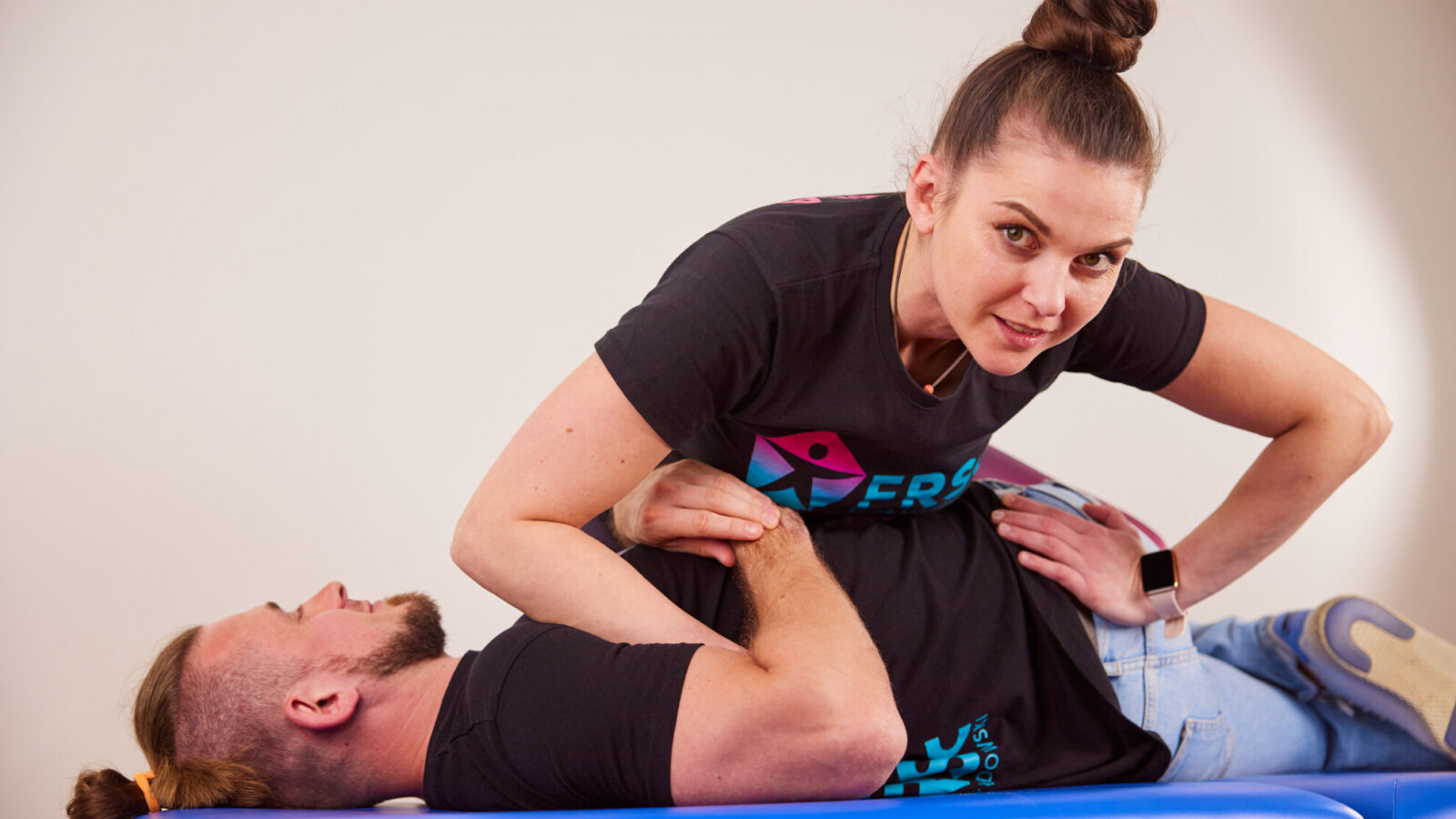Spinal manipulation is a popular therapeutic technique that aims to improve motor function and alleviate pain. In this article, we will discuss what these techniques are, what they involve, what benefits they offer, and take a closer look at their safety.
Spinal manipulation – what are they and what do they involve?
Spinal manipulation, contrary to common patient beliefs, does not involve realigning, repositioning, or "pushing" a herniated disc back into place. The incorrectly used term "spinal realignment" originates from folk medicine, where this term was used to explain the effectiveness of these procedures. This name stemmed from the limited knowledge of those involved in the field and the general lack of information on the biomechanics and physiology of the musculoskeletal system. Modern knowledge shows that manual realignment of a vertebra is impossible, and a herniated disc cannot be "pushed" back into place.
In Polish nomenclature, the most correct term for this type of procedure is manipulation or mobilization with impulse.
Manipulation techniques are used quite commonly because they have an analgesic effect, improve the range of joint movement, its nutrition and tolerance to loads, reduce the sensitivity of nerves to mechanical stimuli and influence the normalization of muscle tone both locally and distally, which consequently results in improved daily functioning.
Their effective execution requires the therapist to train, practice, and hone palpation and psychomotor skills. A qualified therapist can correctly select a position to select all movement components while maintaining the patient's comfort, achieving multidirectional compression of a given segment. The goal of this technique is to apply a rapid (but non-traumatic) impulse to the patient's tissues, with relatively minimal force and low amplitude, among other things, to achieve rapid joint expansion (cavitation mechanism).

Cavitation – what is it?
Cavitation is a physical phenomenon that occurs when pressure in fluids suddenly changes, leading to the formation of gas bubbles. During manipulation of the spine and peripheral joints, when the therapist performs rapid and precise movements, a sudden change in pressure within the joint can occur. As a result, gas bubbles, which naturally occur in the synovial fluid of joints, can form and implode, producing a characteristic "click," "pop," or "crunch" sound.
Cavitation step by step:
- Sudden pressure – during manipulation, the therapist introduces sudden changes in joint pressure.
- Bubble formation – Reducing pressure in synovial fluid leads to the formation of micro-bubbles of gas. These bubbles are the result of gas dissolving in the fluid, and their formation is a natural response to changes in pressure.
- Bubble implosion – as pressure returns to normal, these bubbles can rapidly implode. This implosion phenomenon is responsible for the sound produced during manipulation. This sound is primarily produced during manipulation of synovial joints, but is rarely heard during manipulation of synchondroses.
Is cavitation important?
The effects of cavitation are believed to have a therapeutic effect. After cavitation, the joint space increases for approximately 15-30 minutes (this is the time it takes for the gas to be absorbed by the synovial fluid), range of motion increases, and reflex muscle relaxation occurs.

Watson, P. i Mollan, RAB (1990). Cineradiography of a cracking joint. The British Journal of Radiology, 63(746), 145–147. doi:10.1259/0007-1285-63-746-145
The phenomenon of cavitation is considered a natural effect of manipulation, and its occurrence is often seen as confirmation that the procedure has been performed effectively. However, it should be emphasized that the presence or absence of sound often does not affect the effectiveness of the therapy. The mechanical effects that occur within joints during manipulation often operate independently of concomitant neurophysiological processes, such as reflexive reduction of muscle tone within a specific sclerotome or myotome.
What does this mean?
The cavitation phenomenon is crucial for achieving separation between joint surfaces, but it does not necessarily influence the neurophysiological effects associated with the procedure. Therefore, the absence of a characteristic "click" during manipulation should not be interpreted as a failure of the procedure. In fact, manipulation techniques can be effective even in cases where no audible sound effect is present. What is crucial is how the patient feels after the manipulation and what therapeutic benefits are achieved.
Benefits of manipulation
Manipulations of the spine and peripheral joints bring a number of benefits that are confirmed by numerous scientific studies and clinical observations.
Some of them are:
- Pain reduction.
One of the main reasons patients choose manipulation is its potential for pain relief. Studies show that spinal manipulation is effective in treating various types of pain, including low back and cervical spine pain, headaches, and joint dysfunction. Many people report significant relief, often after a single treatment, or sometimes after a series of treatments, confirming its effectiveness in clinical practice.
- Improving range of motion
Manipulations also have a beneficial effect on improving joint range of motion. Thanks to mobilization and manipulation techniques, patients often experience greater freedom of movement and reduced joint stiffness. This, in turn, can contribute to a better quality of life and improved daily function, which is particularly important for physically active individuals.
- Improving posture
Manipulations can help correct postural problems, which in turn leads to a reduced risk of injury and chronic pain. Research shows that manipulation can support core muscle activity by improving function. Stronger core muscles are crucial for maintaining proper posture, especially during prolonged periods of sitting, such as sitting at a desk.
- Improved circulation
Spinal manipulation improves circulation by increasing blood flow, stimulating the lymphatic system, improving tissue oxygenation, and reducing muscle tension. These effects contribute to improved overall well-being and the body's ability to regenerate and fight disease by reducing inflammation.
- Normalization of muscle tone
Manipulation techniques normalize muscle tone both locally and distally from the manipulation site, which contributes to greater comfort and better physical performance.
- Improving the function of the nervous system
Manipulations can support the proper functioning of the nervous system by reducing pressure on its structures and increasing circulation within it. This, in turn, leads to increased oxygen and nutrient distribution, which supports regenerative processes. Furthermore, manipulations can help reduce stress levels, which has a positive effect on the nervous system, reducing tension and improving the patient's overall well-being.
- Support in the treatment of diseases
In some cases, manipulation may be part of a broader treatment plan for conditions such as sciatica or discopathy.

Manipulation safety
Manipulations, like other forms of therapy, carry certain risks. However, it should be noted that these risks are no greater than those associated with other physiotherapy procedures. Cervical manipulation raises the greatest concern, but research shows that the risks of cervical manipulation are comparable to or lower than those associated with NSAIDs, which are commonly used for musculoskeletal disorders. Estimates of adverse effects range from 1 in 200,000 to 1 in several million cervical spine manipulations. Lumbar manipulations have an even lower risk of complications.
Although manipulations are considered safe, there are situations in which their use is inadvisable.
Here are some of the contraindications to manipulation:
- weakened bone and ligament structure due to injury or disease
- skeletal tumors
- unstable fractures
- spinal cord injuries
- bone marrow inflammation
- vertebral-basilar insufficiency
- vascular and neurological disorders in the area of the body where the affected joint is located
- nerve damage
In the context of discussing contraindications to manipulative procedures, it is important to emphasize that one of the key contraindications is the patient's lack of consent to undergo this type of therapy. The patient should be fully aware of the purpose and course of the actions undertaken by the therapist. Informed consent has been defined as "the voluntary and revocable consent of an individual to participate in therapy or research, based on a proper understanding of the nature, purpose, and consequences of the action."
A key aspect of ensuring the safety of a procedure is, above all, a suitably qualified therapist who will rule out contraindications and select all parameters to ensure that manipulations are both effective and safe for the patient. A therapist using any therapy must always consider the so-called benefit ratio, meaning that the beneficial effects of the procedure must outweigh any potential adverse effects. Contraindications are determined based on an interview, physical examination, and clinical tests. They can be classified as general or local, absolute or relative, depending on factors such as the specialist's skill, experience, and training, the chosen technique, the length and force of the lever used, as well as the patient's age, general health, and attitude.
Summary
Spinal manipulation offers a range of health benefits. Numerous scientific studies demonstrate the positive effects of these techniques in pain management and joint function. Manipulations normalize muscle tone, improve circulation, and increase joint range of motion. They also have a beneficial effect on the nervous system, can improve posture and overall well-being, and support the body's regenerative processes. Regular manipulation sessions can significantly improve patients' quality of life. However, it is important that they are performed by qualified professionals and that patients are aware of the indications and contraindications for their use.
Thanks to scientific research, the number of which has significantly increased in recent years, manipulation of the spine and peripheral joints may gain greater recognition in the medical community, but it should be considered as part of a comprehensive therapy that also includes other forms of manual therapy, physiotherapy, exercises and patient education.

Ewelina Napiórkowska
I am a physiotherapist, naturopath, hirudotherapist, acupuncturist. I gained my first professional skills in hospitals and clinics in Warsaw, and I have been running an individual practice since 2016. Read more...
Check out the course
Refrences
- Gibbons P, Tehan P. Manipulacje kręgosłupa, klatki piersiowej i obręczy biodrowej w osteopatii. Elsevier 2010
- LaPelusa A, Bordoni B. High-Velocity Low-Amplitude Manipulation Techniques. 2023 Jun 4. In: StatPearls [Internet]. Treasure Island (FL): StatPearls Publishing; 2024 Jan–. PMID: 34662041.
- Galindez-Ibarbengoetxea X, Setuain I, Andersen LL, Ramírez-Velez R, González-Izal M, Jauregi A, Izquierdo M. Effects of Cervical High-Velocity Low-Amplitude Techniques on Range of Motion, Strength Performance, and Cardiovascular Outcomes: A Review. J Altern Complement Med. 2017 Sep;23(9):667-675. doi: 10.1089/acm.2017.0002. Epub 2017 Jul 21. PMID: 28731832.
- Thiel, Haymo W. DC, PhD*; Bolton, Jennifer E. PhD*; Docherty, Sharon PhD*; Portlock, Jane C. PhD†. Safety of Chiropractic Manipulation of the Cervical Spine: A Prospective National Survey. Spine 32(21):p 2375-2378, October 1, 2007. | DOI: 10.1097/BRS.0b013e3181557bb1
- Sim, J. (1986) Informed Consent: Ethical Implications for Physiotherapy. Physiotherapy, 72, 584





